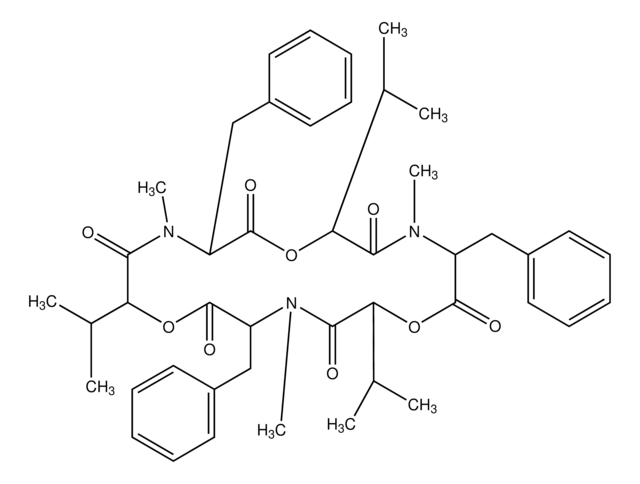M5269
Moniliformin sodium salt from Fusarium proliferatum
Sinónimos:
1-Hydroxycyclobut-1-ene-3,4-dione
About This Item
Productos recomendados
Quality Level
storage temp.
2-8°C
SMILES string
O=C1C(C=C1[O-])=O.[Na+]
InChI
1S/C4H2O3.Na/c5-2-1-3(6)4(2)7;/h1,5H;/q;+1/p-1
InChI key
FERDNJVXTWPNSA-UHFFFAOYSA-M
General description
Application
- to test its acute oral toxicity in mice
- to test its subacute toxic effects in rats
- in characterizing mycotoxins from Aspergillus
Biochem/physiol Actions
signalword
Danger
hcodes
pcodes
Hazard Classifications
Acute Tox. 3 Oral
Storage Class
6.1A - Combustible acute toxic Cat. 1 and 2 / very toxic hazardous materials
wgk_germany
WGK 3
flash_point_f
Not applicable
flash_point_c
Not applicable
ppe
Eyeshields, Faceshields, Gloves, type P2 (EN 143) respirator cartridges
Certificados de análisis (COA)
Busque Certificados de análisis (COA) introduciendo el número de lote del producto. Los números de lote se encuentran en la etiqueta del producto después de las palabras «Lot» o «Batch»
¿Ya tiene este producto?
Encuentre la documentación para los productos que ha comprado recientemente en la Biblioteca de documentos.
Los clientes también vieron
Nuestro equipo de científicos tiene experiencia en todas las áreas de investigación: Ciencias de la vida, Ciencia de los materiales, Síntesis química, Cromatografía, Analítica y muchas otras.
Póngase en contacto con el Servicio técnico









